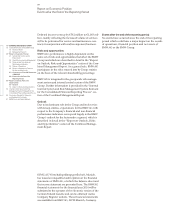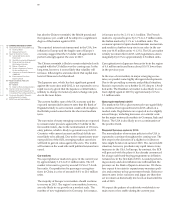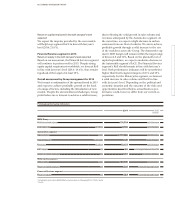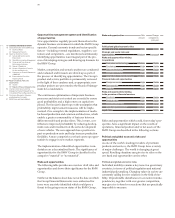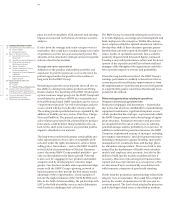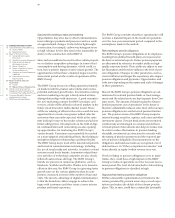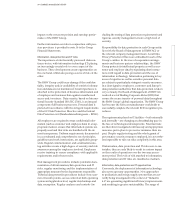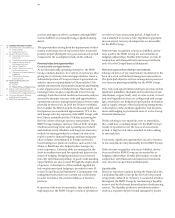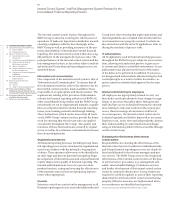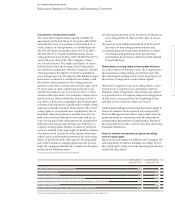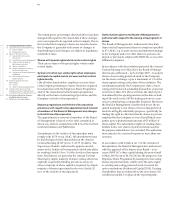BMW 2014 Annual Report Download - page 74
Download and view the complete annual report
Please find page 74 of the 2014 BMW annual report below. You can navigate through the pages in the report by either clicking on the pages listed below, or by using the keyword search tool below to find specific information within the annual report.
74
18 COMBINED MANAGEMENT REPORT
18
General Information on the
BMW
Group
18 Business Model
20 Management System
23 Report on Economic Position
23 General and Sector-specific
Environment
26 Overall Assessment by Management
26
Financial and Non-financial
Performance Indicators
29 Review of Operations
49 Results of Operations, Financial
Position and Net Assets
61 Comments on Financial Statements
of BMW AG
64 Events after the End of the
Reporting Period
65 Report on Outlook, Risks and
Opportunities
65 Outlook
70 Report on Risks and Opportunities
82 Internal Control System and Risk
Management System Relevant for
the
Consolidated Financial Reporting Process
83 Disclosures Relevant for Takeovers
and Explanatory Comments
87
BMW Stock and Capital Markets
place for such eventualities. Risk amounts and earnings
impact are measured on the basis of extensive scenario
analyses.
If risks from the strategic and sector category were to
materialise, they could have a medium impact on results
of operations over the two-year assessment period. The
amounts of risk attached to strategic and sector-specific
risks are classified as medium.
Strategic and sector opportunities
Additions to the product and mobility portfolio and
expansion in growth regions are seen as the most
im-
portant opportunities for growth in the medium to
long term for the BMW Group.
Remaining on growth course depends above all else on
the ability to develop innovative products and bring
them to market. The launching of the BMW i brand opens
up new customer target groups for the BMW Group and
consolidates the position of BMW as a sustainable and
forward-looking brand. BMW i products can be seen as
“empowerment projects” for new technologies and pro-
cesses, which will also benefit other vehicle concepts.
The existing product portfolio has been expanded by the
addition of mobility services such as DriveNow, Charge-
Now
and ParkNow. The general acceptance of, and
sales volumes generated with, planned future product
innovations could be better than predicted in the out-
look. In the short term, however, any potential positive
impact is classified as not material.
The long-term trend towards greater sustainability pro-
vides opportunities to boost sales of sustainable prod-
ucts and, under the right circumstances, achieve better
selling prices. Innovations – such as the BMW i3 and i8
in the field of electromobility or Efficient Dynamics
across the entire BMW Group product portfolio – pro-
vide
excellent platforms for future growth. Potential
is also seen by engaging in new product and market
categories and by developing new customer target
groups. New business models and cooperation
arrange-
ments with the BMW Group’s growing network of
business partners often provide the best means to take
advantage of these opportunities. Good examples of
this are the implementation of the 360°ELECTRIC port-
folio in the field of electromobility, the partnership with
SIXT in the field of mobility services and collaboration
with Toyota on a hydrogen fuel cell system.
The BMW Group is constantly refining the tools it uses
to recruit employees, encourage career development and
bind employees to the enterprise. Within this
environ-
ment, employees find the optimal situation in which to
develop their skills. If these measures generate greater
benefits than currently expected, the BMW Group’s
rev-
enues, results of operations and cash flows could be
positively impacted and forecasted figures surpassed.
Creating a successful performance culture and the devel-
opment of the expertise and skill sets of both staff and
managers alike throughout the organisation could also
have a positive impact on revenue and profitability.
Given the long lead times involved, the BMW Group’s
earnings performance is unlikely to benefit over the as-
sessment period
from efficiency improvements or from
the implementation of product and process developments
to a significantly greater extent than that already incor-
porated in the outlook.
Risks and opportunities relating to operations
Production and technology-related risks
Production stoppages and downtimes – in particular
due to fire, but also those attributable to manufacturing
equipment breakdowns, logistical disruptions or new
vehicle production line startups – represent risks which
the BMW Group counters with a broad range of appro-
priate measures. Production structures and processes
are designed from the outset with a view to reducing
potential damage and the probability of occurrence. In
addition to technical fire protection measures, the BMW
Group has implemented an array of strategies, including
preventative maintenance, land development measures
including contingencies against flooding, spare parts
management on a multi-site basis and backup plans
for alternative transportation. The level of risk is also
reduced by the deployment of flexible work-schedule
models and employee time accounts, but also by the
ability to build specific models at additional sites if
necessary. Moreover, risks arising from business inter-
ruption and loss of production as a consequence of fire
are also insured up to economically reason able levels
with insurance companies of good credit standing.
If risks from the production and technology-related risks
category were to materialise, they could have a high im-
pact on the results of operations over the two-year as-
sessment period. The level of risk attached to pro uction
and technology-related issues is classified as medium.


